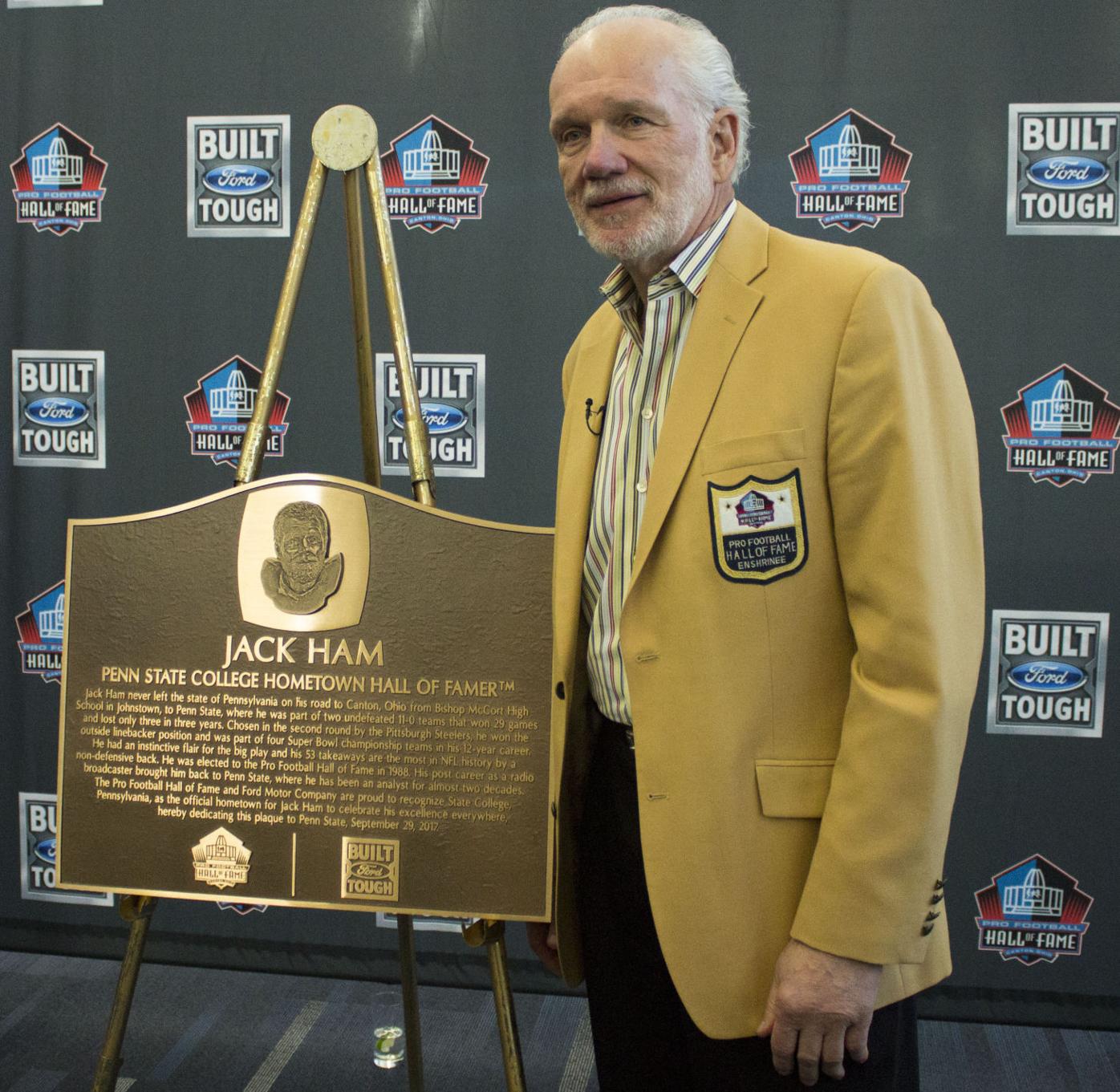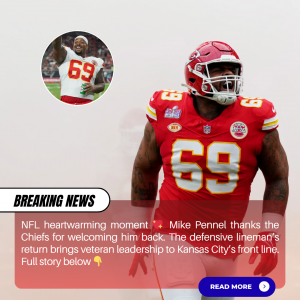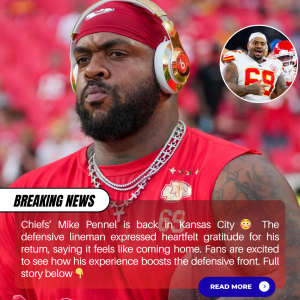Hall of Fame Legend Jack Ham Weighs In as Steelers Face Scrutiny Over NFL’s Most Expensive Defense
October 31, 2025 – Pittsburgh, Pennsylvania
When the Pittsburgh Steelers acquired Jalen Ramsey this past summer, the move was hailed as a franchise-defining decision. After years of searching for a defensive playmaker capable of leading a new generation of the “Steel Curtain,” Pittsburgh landed one of the NFL’s most decorated defensive backs — a six-time Pro Bowler, three-time First-Team All-Pro, and Super Bowl champion.
At the time, Ramsey’s arrival was celebrated as the final piece to a defense already stacked with high-end talent. The expectation was simple: his experience, swagger, and leadership would elevate the Steelers’ defense from good to dominant.
But as the season’s midpoint arrives, the results have been mixed — and the questions about the wisdom of that blockbuster trade are growing louder.
The Price of Greatness

At 31 years old, Jalen Ramsey remains one of football’s most instinctive defenders. His physicality, versatility, and football IQ are still evident every Sunday. Yet, the player who once blanketed top receivers one-on-one with ease now faces the realities of time and attrition.
Injuries over the past few seasons — including knee and shoulder issues — have taken a toll. The Steelers have tried to adapt by using Ramsey in multiple roles: slot corner, boundary corner, and even safety. While the flexibility reflects his football intelligence, it has also created inconsistency in his performance.
“I’ll play wherever the team needs me,” Ramsey said earlier this week. “I still believe I can lock down anyone on the field. But at this stage, it’s about playing smart — relying on experience, not just speed.”
Ramsey’s commitment and leadership are not in question. But the economics of his deal paint a more complicated picture. His restructured contract carries an average annual value of $24 million, placing him among the five highest-paid defensive backs in the league.
That figure would be easier to justify if Ramsey were still playing every down as an elite boundary corner — the role in which he built his reputation. But with Pittsburgh deploying him increasingly in the slot and safety hybrid role, the financial comparison becomes harder to defend.
For context, the top players at those positions typically command between $10–14 million per year, according to Spotrac data.
“He’s still elite in spots,” one Steelers insider said. “But that $24 million price tag is tough when most of his snaps aren’t coming at the position he’s being paid for.”
A Defense Under Pressure
The Steelers’ defense entered 2025 with sky-high expectations — and an equally high payroll. Pittsburgh currently leads the NFL in defensive spending, allocating more than $120 million in cap dollars to the unit, including significant investments in T.J. Watt, Alex Highsmith, Cam Heyward, and Ramsey.
On paper, that kind of spending should produce a dominant, top-five defense. In practice, however, the results have been uneven. The Steelers rank near the middle of the pack in total yards allowed and have struggled in pass coverage against elite offenses.
Part of the challenge has been injuries, but part of it, too, is philosophical. Pittsburgh’s defensive identity — built on pressure and man coverage — depends heavily on athleticism and speed at the back end. Ramsey, still one of the smartest and toughest defenders in the game, now relies more on anticipation than raw speed, and that occasionally shows when covering younger, faster receivers.
The Voice of a Legend
As debate over the trade intensifies, one of Pittsburgh’s most respected voices has entered the conversation: Hall of Famer Jack Ham, a key member of the original Steel Curtain defense of the 1970s.
Ham, who earned eight Pro Bowl selections and was known for his cerebral approach to the game, didn’t mince words when asked about Ramsey’s current impact.
“I’ve got nothing but respect for Jalen Ramsey — he’s been a nightmare for quarterbacks for years,” Ham said. “But football isn’t about reputation. It’s about production. The Steelers need to ask themselves: are they paying for who he is right now, or who he used to be?”
Ham’s remarks carry weight not because they are inflammatory, but because they echo a broader concern among fans and analysts alike — that Pittsburgh, for all its tradition and pride on defense, may be investing in names more than output.
The Leadership Factor
Within the locker room, however, Ramsey’s value extends beyond statistics. Players and coaches consistently describe him as a tone-setter — someone whose preparation, competitiveness, and film study elevate everyone around him.
“He’s one of those guys you learn from just by watching,” said linebacker T.J. Watt. “He brings a championship mindset. When things get tough, he’s the first to speak up. That matters.”
Indeed, even if Ramsey’s pure coverage numbers have declined, his influence on a young secondary — including second-year corners Joey Porter Jr. and Cory Trice — has been significant. Both players have credited Ramsey with helping them refine their technique and understand offensive tendencies.
The Financial Crossroads
Still, the business side of the NFL rarely allows sentiment to outweigh cap strategy. The Steelers structured Ramsey’s deal with flexibility, allowing them to move on after the 2025 season with minimal dead money. Doing so would free up more than $18 million in cap space for 2026.
Such a move, however, would come at a cost beyond the balance sheet. Releasing or trading Ramsey would remove one of the few players on the roster with a Super Bowl ring — a veteran presence who’s been through the highest levels of competition.
Keeping him would mean continuing to pay top-tier money for a player whose role and production may no longer align with his salary. It’s a dilemma every franchise faces with aging stars, and it often tests a team’s long-term vision.
Searching for the Modern “Steel Curtain”
For decades, Pittsburgh has built its identity on defense — from the legendary front of Mean Joe Greene and Jack Lambert, to more recent eras anchored by Troy Polamalu and James Harrison. The acquisition of Jalen Ramsey was supposed to bridge those generations, linking the Steelers’ storied past with their modern ambitions.
But as the team approaches the second half of the season, the question remains whether the investment has paid off — or whether it reflects a team still chasing echoes of former glory.
Ramsey’s toughness, leadership, and versatility remain undeniable. Yet, as Jack Ham suggested, the NFL is a league defined not by legacy but by production.
Looking Ahead
As the Steelers prepare for a challenging stretch of games, Ramsey’s role could prove pivotal. If he stabilizes the secondary and provides the leadership Pittsburgh envisioned when they traded for him, the noise around his contract will quiet quickly.
But if the inconsistency continues, the franchise may face an uncomfortable reality this offseason — deciding between sentiment and strategy.
For now, Ramsey remains focused on the task at hand.
“I don’t care about the money or the chatter,” he said. “I care about winning. That’s why I came here — to help this team win the right way.”
Whether that mission ends with a playoff run or another round of offseason reflection remains to be seen. But one thing is certain: in a city that built its identity on defensive greatness, expectations will always be measured not in dollars — but in dominance.
And as Jack Ham’s words continue to echo through Pittsburgh’s football circles, the question still lingers:
Are the Steelers paying for the player Jalen Ramsey is today — or for the legend he once was?






